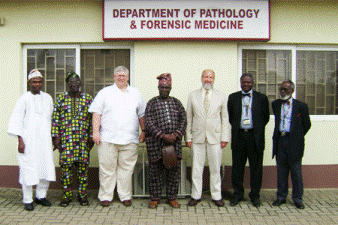Natural Resources, School of

Karl Reinhard Publications
Document Type
Article
Date of this Version
2000
Citation
Published in Archaeological Method and Theory: An Encyclopedia, ed. Linda Ellis (Garland, 2000), pp. 443–448.
Abstract
An emerging field devoted to the exploration of the archaeological record for evidence of medicinal plants.
In the future, archaeology will have a role in pharmaceutical research. In the late twentieth century, much of the world’s pharmaceutical research has been based on ethnographic documentation of tribally recognized medicinal plants. Once the active chemical compounds in the plants are identified, they are either extracted or synthesized for commercial use. The American film Medicine Man depicts this approach. As shown in the film, such pharmacological research is threatened by declining tribal populations with loss of traditional herbal knowledge coupled with declining biodiversity. With the loss of ethnopharmacological information, the knowledge of ancient cultures can be tapped through archaeology. Every prehistoric culture had some sort of healthcare system, and a pharmacopoeia was integral in each ancient cultural system. Most medicinal compounds used were derived from plants. In theory, the archaeological record can be used to identify medicinal plants used in ancient times. In practice, new archaeological research has demonstrated the presence of anomalous plant finds that, under scrutiny, prove to have had a medicinal use. Therefore, the reserve knowledge of medicinal plants can be expanded by exploring the archaeological record for relevant botanical remains.
The paleopharmacological approach compares archaeological data with ethnographic and plantchemistry data. Through this approach, researchers identify specific ailments treated with plant extracts and identify the physiologically active compounds in the plant. Thus, paleopharmacology employs archaeological and ethnographic investigation of the ancient use of medicinal plants in the light of what is known about plant chemistry and physiology.
The paleopharmacological record also includes textual information from ancient cultures that document medicinal plant usage. Most documentation of pharmacopoeias comes from the Old World. For example, Morris Weiss and Raoul Perrot have separately summarized aspects of Etruscan medicine and medieval medicine, respectively. In A.D. 77, Dioscorides (Greek physician and pharmacologist) wrote the De Materia Medica, which summarized Greco-Roman knowledge of medicinal plants. Medieval medical practitioners based their Materia Medicalis on this work. The Greeks and Romans were influenced by the herbal knowledge of the Egyptians. In 1989, Lise Manniche summarized the Egyptian pharmacopoeia from several Egyptian texts, including the Papyrus Ebers, which dates to 1550 B.C. At least three Aztec documents describe a New World pharmacopoeia that was studied by Bernard Ortiz de Montellano in 1975.
Included in
Alternative and Complementary Medicine Commons, Archaeological Anthropology Commons, Ecology and Evolutionary Biology Commons, Environmental Public Health Commons, Other Public Health Commons, Parasitology Commons


Comments
Copyright © 2000 Linda Ellis.